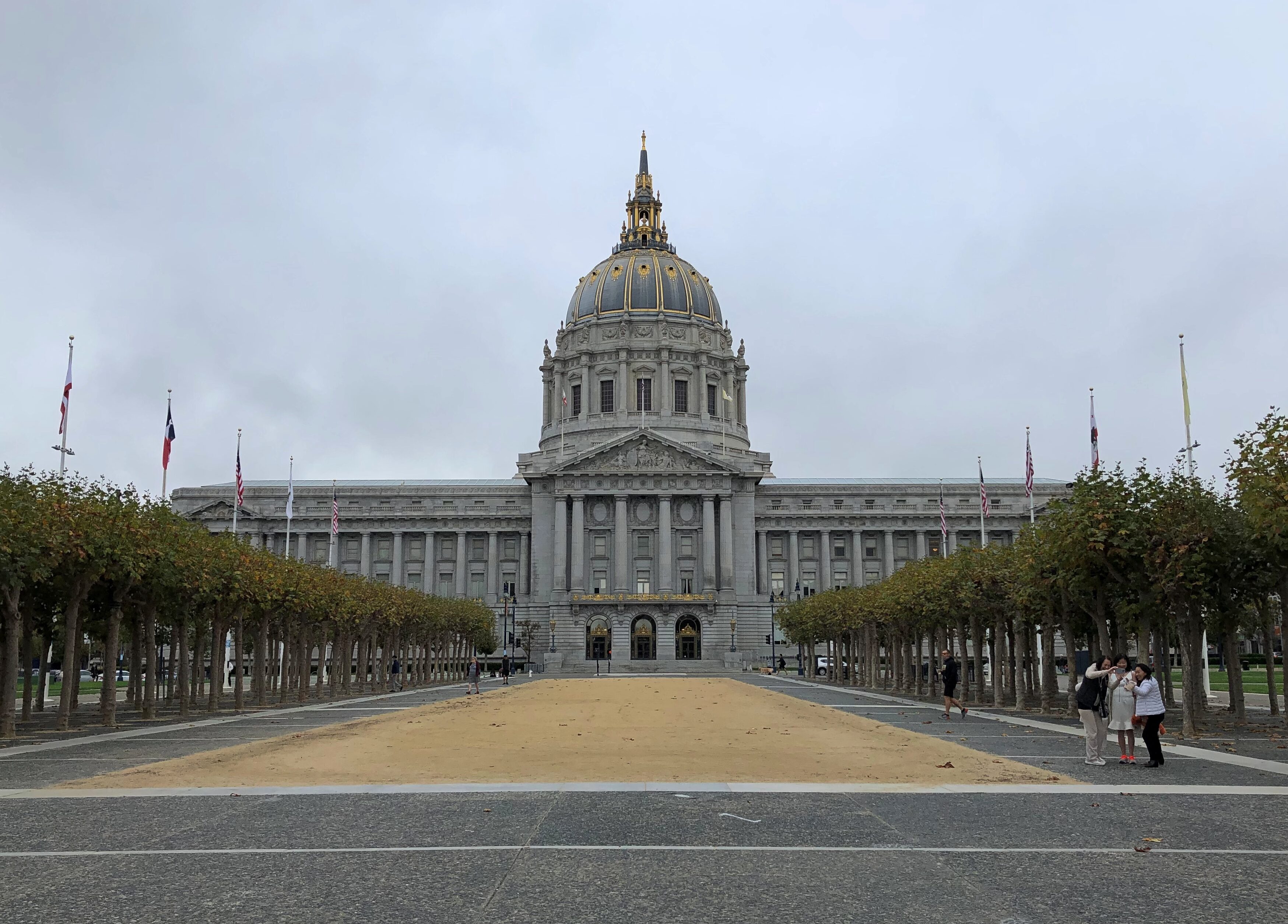I saw Oakland City Hall during my recent Bay Area visit, so I thought it only reasonable that I see 1915-vintage San Francisco City Hall as well. I already knew it is doozy, designed by Arthur Brown Jr. to replace one damaged in 1906.
So on the morning of October 30, I made my way to the building, which looks as grand as any U.S. state capitol, and more than some. 
Unfortunately, it was closed on a Saturday morning. 

According to an old and pitted plaque in the ground, this public space is officially the Joseph L. Alioto Performing Arts Piazza. Wonder if anyone actually calls it that. Google Maps calls it Civic Center Plaza.
Across Larkin St. from the plaza is a tent city, behind a fence on four sides. There is good aerial view of it at this New York Post article (why that paper cares, I couldn’t say). It’s a city-sponsored experiment in dealing with pandemic-era homelessness.
From the ground, only a small part is visible.

I hadn’t come this way just to see City Hall or the nearby tent city. Rather, I was killing time before the opening of the Asian Art Museum, which faces City Hall.

The museum’s subhead — that’s what I’m going to call it — is the Chong-Moon Lee Center for Asian Art and Culture, reflecting the fact that the businessman of that name gave $15 million to museum to seed its relocation from space shared with the de Young Museum to its current location, in the former SF Main Library.
The building, designed by George W. Kelham, was completed in 1917 to replace one destroyed — you guessed it — by the 1906 earthquake. It in turn was damaged in 1989, and replaced by a new main library not far away. Seismic activity is just a fact of remaking the city, it seems.
These are slightly embarrassing times for the Asian Art Museum. Turns out the wealthy businessman whose collection was the basis for its splendid collection — Avery Brundage — reportedly had Nazi sympathies or at least anti-Semitic tendencies and (something much better documented) was on the wrong side of history in 1968 when, as IOC president, he had Tommie Smith and John Carlos kicked out the Olympics for their Black Power Salute. Oops.
For his retro-gressions, the museum removed a bust of Brundage from the foyer of the building last year. It has not, I noticed, removed the acknowledgements with each piece of art that came from the Brundage collection. Give it time.
What a collection it is. A small sample:
Greek-inspired art from the Indus River Valley, 2nd century CE. I’d heard of that, but don’t remember seeing any examples.
All together, the museum has more than 18,000 works in its permanent collection, with more than 2,000 items on display at any given time, variously from South Asia, Iran and Central Asia, Southeast Asia, the Himalayas, China, Korea and Japan.
The galleries mostly obscure whatever remains of the original interior —

— but I noticed an unlocked door that took me to this space, which is also used as a gallery, though not a readily visible one.

Wow. The museum shouldn’t hide this space away.








